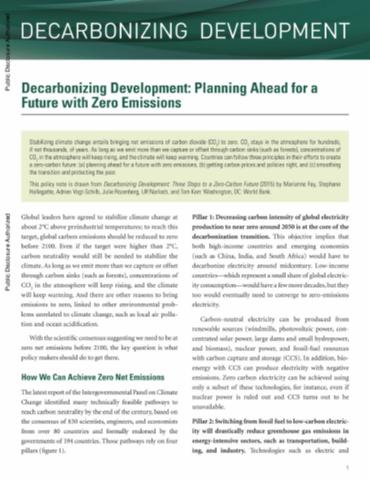The World Bank is a vital source of financial and technical assistance to developing countries around the world. We are not a bank in the ordinary sense but a unique partnership to reduce poverty and support development. The World Bank Group has two ambitious goals: End extreme poverty within a generation and boost shared prosperity.
- To end extreme poverty, the Bank's goal is to decrease the percentage of people living on less than $1.25 a day to no more than 3% by 2030.
- To promote shared prosperity, the goal is to promote income growth of the bottom 40% of the population in each country.
The World Bank Group comprises five institutions managed by their member countries.
The World Bank Group and Land: Working to protect the rights of existing land users and to help secure benefits for smallholder farmers
The World Bank (IBRD and IDA) interacts primarily with governments to increase agricultural productivity, strengthen land tenure policies and improve land governance. More than 90% of the World Bank’s agriculture portfolio focuses on the productivity and access to markets by small holder farmers. Ten percent of our projects focus on the governance of land tenure.
Similarly, investments by the International Finance Corporation (IFC), the World Bank Group’s private sector arm, including those in larger scale enterprises, overwhelmingly support smallholder farmers through improved access to finance, inputs and markets, and as direct suppliers. IFC invests in environmentally and socially sustainable private enterprises in all parts of the value chain (inputs such as irrigation and fertilizers, primary production, processing, transport and storage, traders, and risk management facilities including weather/crop insurance, warehouse financing, etc
For more information, visit the World Bank Group and land and food security (https://www.worldbank.org/en/topic/agriculture/brief/land-and-food-security1
Resources
Displaying 936 - 940 of 4907Decarbonizing Development
Stabilizing climate change entails
bringing net emissions of carbon dioxide (CO2) to zero. CO2
stays in the atmosphere for hundreds, if not thousands, of
years. As long as one emit more than captured or offset
through carbon sinks (such as forests), concentrations of
CO2 in the atmosphere will keep rising, and the climate will
keep warming. Countries can follow three principles in their
efforts to create a zero-carbon future: (a) planning ahead
Tanzania Poverty Assessment
Since the early 2000s, Tanzania has seen
remarkable economic growth and strong resilience to external
shocks. Yet these achievements were overshadowed by the slow
response of poverty to the growing economy. Until 2007, the
poverty rate in Tanzania remained stagnant at around 34
percent despite a robust growth at an annualized rate of
approximately 7 percent. This apparent disconnect between
growth and poverty reduction has raised concerns among
Decarbonizing Development
Stabilizing climate change entails bringing net emissions of carbon dioxide (CO2) to zero. CO2 stays in the atmosphere for hundreds, if not thousands, of years. As long as we emit more than we capture or offset through carbon sinks (such as forests), concentrations of CO2 in the atmosphere will keep rising, and the climate will keep warming. Countries can follow three principles in their efforts to create a zero-carbon future: (a) planning ahead for a future with zero emissions, (b) getting carbon prices and policies right, and (c) smoothing the transition and protecting the poor.
Social and Economic Impacts of Rural Road Improvements in the State of Tocantins, Brazil
The aim of this paper is to provide
feedback on the question of socioeconomic benefits from
rural road development and the impact of transport
infrastructure on the poor, particularly the poorest and the
bottom 20 percent of the population. This paper relies on
impact evaluation methodologies, which are traditionally
used in social sectors but less so in the transport sector.
The study, including first surveys, was launched in 2003
Household Responses to Shocks in Rural Ethiopia
This paper uses a stochastic dynamic
programming model to characterize the optimal
savings-consumption decisions and the role of livestock
inventories as a buffer stock in rural Ethiopia. The results
show that relatively land-rich households use accumulation
and liquidation of cattle and other animal inventories for
partial consumption smoothing, while low-income households
appear not to do so. The results highlight the need for







